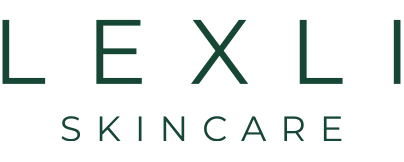For decades, Americans have been warned of the risk of skin cancer caused by exposure to the sun's UV rays and simultaneously encouraged to make sunscreen use a daily habit. Despite advisories from physicians, however, most Americans do not regularly use sunscreen. In fact, a 2020 survey published by the Centers for Disease Control (CDC) reports that only 12.3% of men and 29% of women always apply sunscreen when outside on a sunny day for more than an hour.
Among those consumers who are habitual sunscreen users, there seems to be confusion about how to select a sunscreen product. According to a study, most individuals choose products based on the SPF (sun protection factor) number alone, with preference given to higher spf numbers. Other important factors, like whether or not the product offers broad-spectrum protection or its ability to protect against skin damage (photoaging) are not as heavily considered.
SPF - What Does It Mean?
- Sun Protection Factor (SPF): a relative measure of how long a sunscreen will protect you from ultraviolet B (UVB) rays.
The sun protection factor (SPF) is a number that represents how long you can stay in the sun without burning. For example, if you can typically be in direct sun for 30 minutes before your skin begins to burn, SPF 15 will extend that time by a factor of 15 (30 minutes x 15 = 450 minutes of protection). SPF 30 extends the time before burn to a factor of 30 (30 minutes x 30 = 900 minutes of protection). These estimates are based on proper sunscreen application, a vital factor that is often overlooked. (We’ll get to that in a bit.)
Additionally, SPF numbers tell us the percentage of UVB rays - the rays that cause our skin to burn - the product can absorb. In vitro tests show that SPF 15 absorbs approximately 93% of UVB rays, while SPF 30 absorbs approximately 97%. Beyond this, the absorption rate goes up minimally. SPF 50, for example, absorbs approximately 98% of UVB rays, a minimal increase from SPF 30.
Broad-Spectrum Protection
- Broad-Spectrum Protection: a phrase used to describe a sunscreen that protects against UVA and UVB rays equally.
While SPF measures protection from UVB rays, UVA rays are also harmful. UVA rays are the type of ultraviolet radiation responsible for photoaging, the skin damage that is visible on your skin in the form of wrinkles, hyperpigmentation, rough texture and the like, while contributing to certain types of skin cancer. UVA rays damage the skin without burn so you do not instantly see their negative impact on the skin. However, exposure to UVA rays is cumulative so every exposure adds up.
The only way to ensure the sunscreen product you use provides protection from both UVA and UVB rays is to look for the words "broad spectrum coverage" or "broad spectrum sunscreen" on the label.
Proper Usage Is Vital
Despite the protection that a sunscreen is formulated to deliver, many individuals do not experience that same level of coverage. This is because many of us do not apply enough sunscreen, at the right time, or as frequently as necessary. On average, it takes 1 ounce of sunscreen - an amount equivalent to a shot glass - to get the protection advertised by the product. And because sunscreen takes time to absorb, it is necessary to apply it 15 to 30 minutes before going outdoors. Sunscreen effectiveness is reduced by sweating and water exposure. To ensure consistent protection, sunscreen should be applied every two hours.
Is SPF 15 Enough?
So back to that original question: Is SPF 15 enough?
Many dermatologists and even the Skin Cancer Foundation suggest that SPF 15 provides a good basic level of coverage for everyday activities. Sunscreen often feels increasingly heavy, sticky and even greasy as the SPF level increases and because consistent daily use is the goal, SPF 15 is a comfortable level for most people. With protection from 93% of UVB rays, consumers can feel confident that they're getting a solid degree of protection.
For intense sun exposure - such as a day at the beach or for those individuals who work outdoors - there is benefit to using a sweat- and water-resistant product with SPF 30, which protects from 97% of UVB rays. While you can certainly choose a higher SPF product for increased protection, the minimal increase in protection may not be worth the higher price tag. Ultimately, as you look at SPF 15 vs SPF 30 or an even higher level, the SPF you choose is a personal decision.
In summary, our sunscreen guidance is this: Use a broad-spectrum sunscreen product with a minimum of SPF 15 every day and ensure that you are using the proper amount. Select a product that feels good on your skin so you're more likely to be consistent. While reapplying a sunscreen lotion every two hours can be difficult if you're wearing makeup, consider using a sunscreen spray for face that can be applied on top of makeup throughout the day. Finally, when outdoors for extended periods of time, use protective clothing like wide-brimmed hats or rashguards to protect your skin. After all, sunscreen isn't intended to be your only means of protection.

Interested in learning more? Download your free copy of the skin care ebook written by Lexli founder and lead product formulator, Dr. Ahmed Abdullah!
If your skin had a user's manual, this would be it! Get the ebook that simplifies skin care and outlines the key practices that optimize your skin's health.





